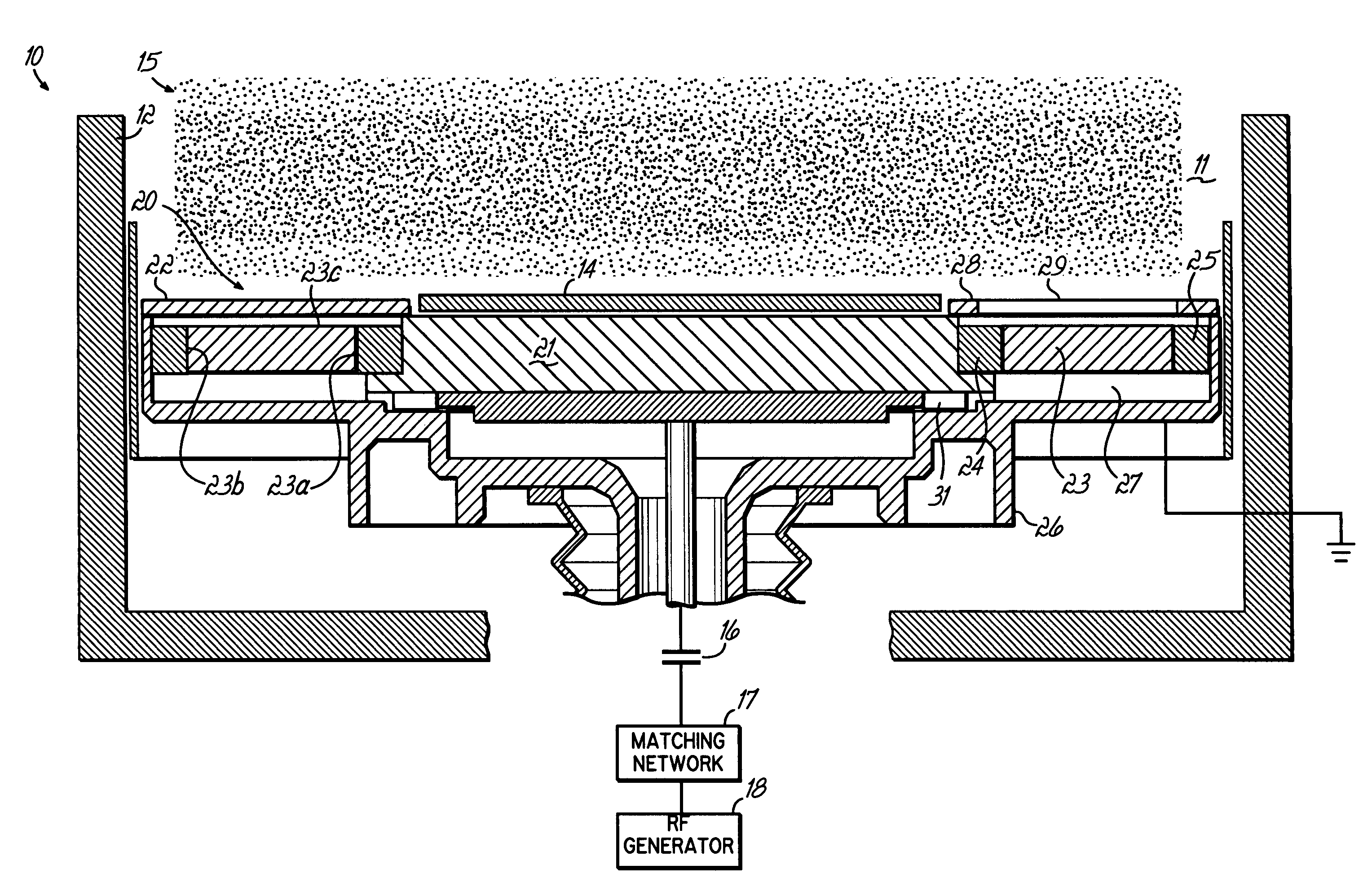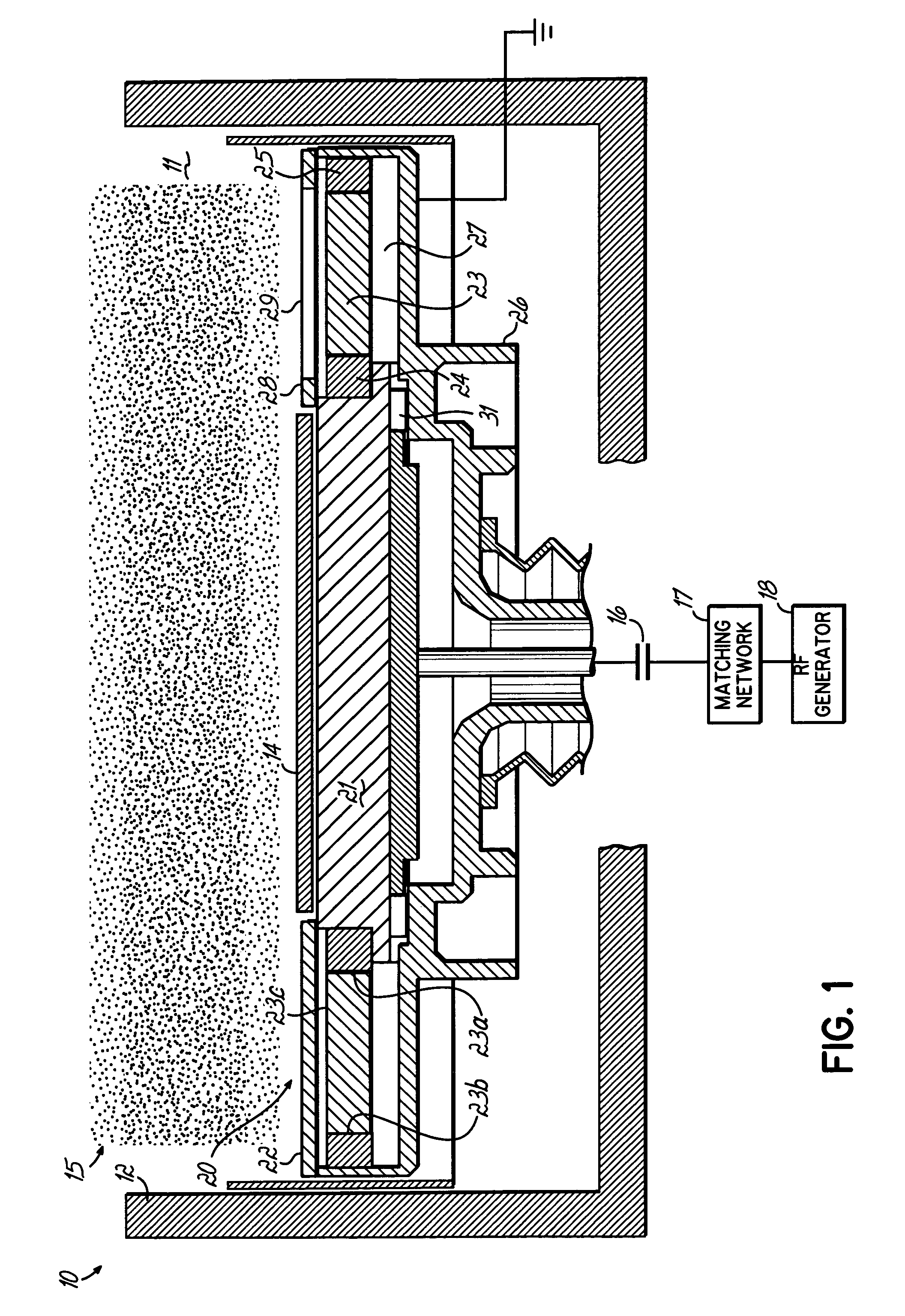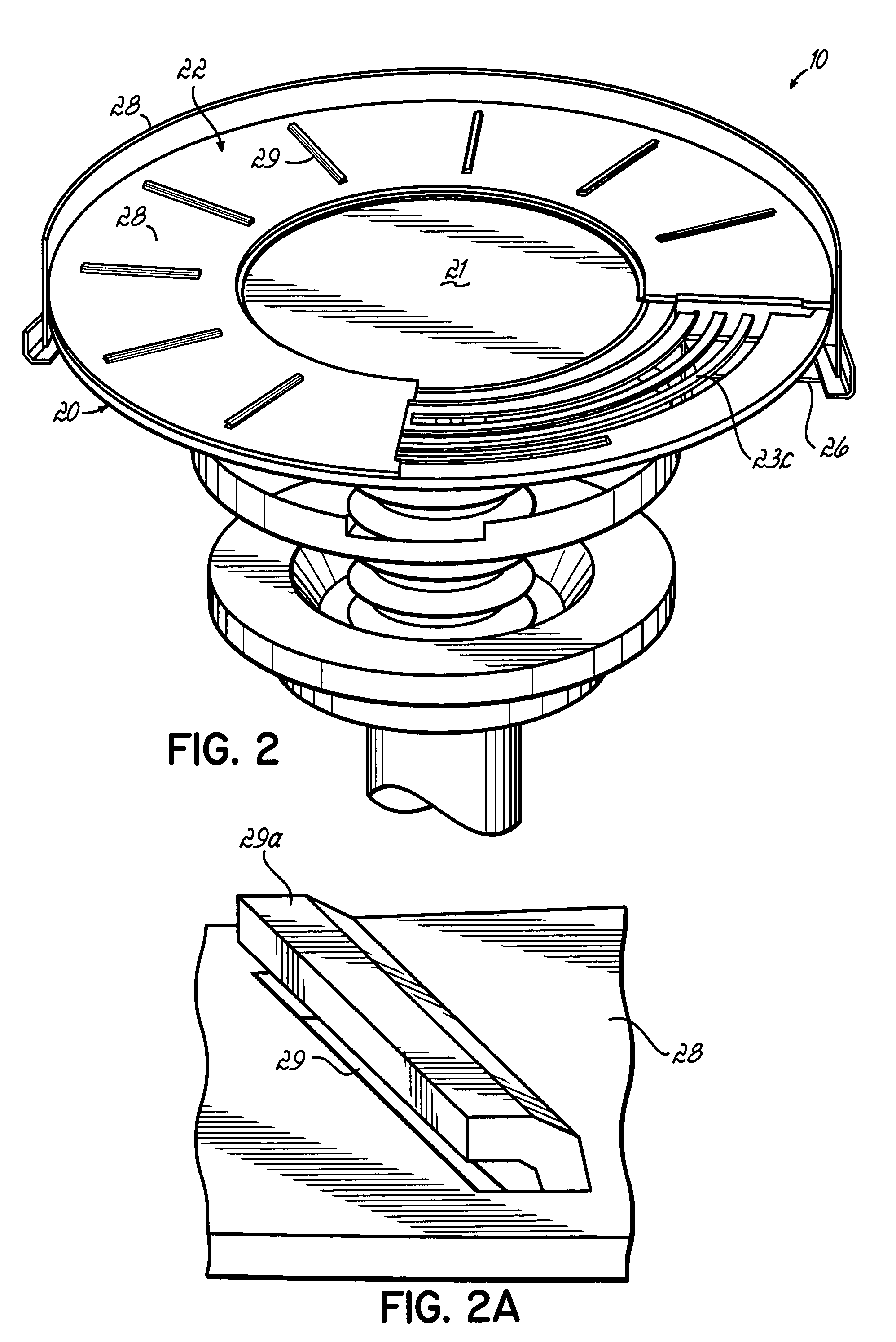Integrated electrostatic inductive coupling for plasma processing
a plasma processing and electrostatic inductive coupling technology, applied in the direction of coatings, electric discharge lamps, electric lighting sources, etc., can solve the problems of chamber contamination, sputtering of these surfaces, and inability to allow real current to flow from the electrode to the rf generator, etc., to achieve high efficiency and reduce costs.
- Summary
- Abstract
- Description
- Claims
- Application Information
AI Technical Summary
Benefits of technology
Problems solved by technology
Method used
Image
Examples
Embodiment Construction
[0032]As illustrated in FIG. 1, according to one embodiment of the invention, a plasma processing apparatus 10 includes a vacuum processing chamber 11 enclosed in a chamber wall 12. An integrated, electrostatic inductively-coupled device or wafer support (i-ESIC) 20 is mounted in the chamber 11 to support individual wafers 14 thereon for processing by a plasma 15 maintained within the vacuum chamber 11.
[0033]Referring to FIGS. 1 and 2, the wafer support 20 has two integrated main components or portions: a capacitive-coupling component 21, which provides a capacitively-coupled RF path to a plasma 15, and an inductively-coupled component 22, which provides an inductively-coupled RF path to the plasma 15. The capacitively-coupled component 21 is a central substrate support portion, typically an electrostatic chuck (ESC), which holds individual wafers to the support 20 during processing. The chuck of the central portion 21 also provides control of the energy of ions from the plasma by c...
PUM
| Property | Measurement | Unit |
|---|---|---|
| pressures | aaaaa | aaaaa |
| diameters | aaaaa | aaaaa |
| slot width | aaaaa | aaaaa |
Abstract
Description
Claims
Application Information
 Login to View More
Login to View More - R&D
- Intellectual Property
- Life Sciences
- Materials
- Tech Scout
- Unparalleled Data Quality
- Higher Quality Content
- 60% Fewer Hallucinations
Browse by: Latest US Patents, China's latest patents, Technical Efficacy Thesaurus, Application Domain, Technology Topic, Popular Technical Reports.
© 2025 PatSnap. All rights reserved.Legal|Privacy policy|Modern Slavery Act Transparency Statement|Sitemap|About US| Contact US: help@patsnap.com



